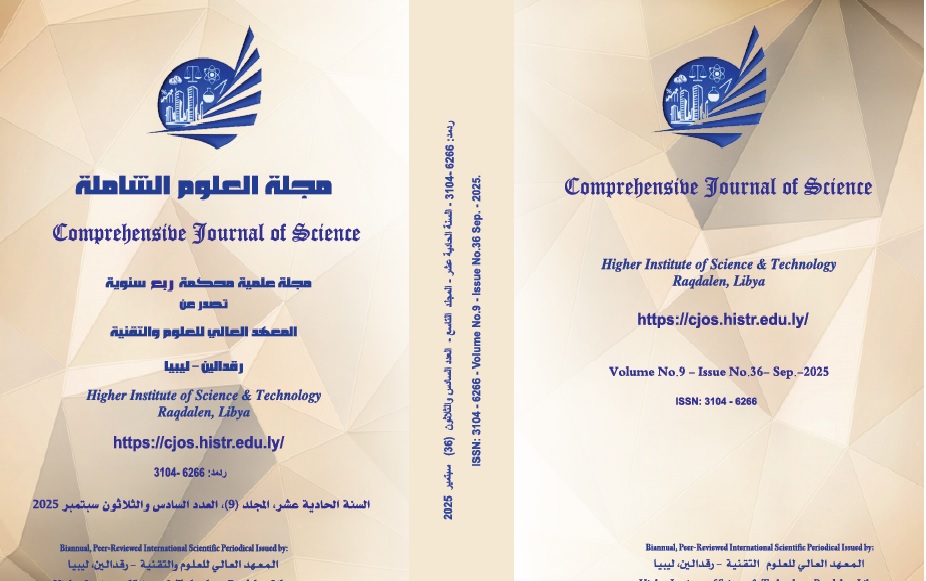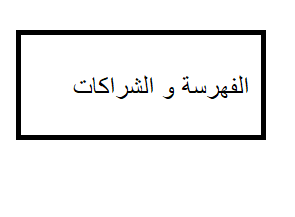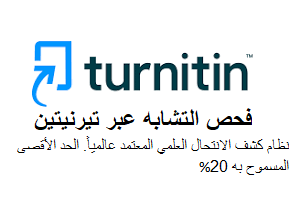دراسة مرجعية عن تأثير دورات الجفاف والرطوبه على تلف الخرسانة المعرضة لكبريتات الصوديوم
Keywords:
كبريتات الصوديوم,دورات الجفاف-الرطوبة,التأكل،هجوم الكبريتات.Abstract
The problem of concrete damage due to interaction with sodium sulfate is one of the important issues in structural engineering, especially in areas that are exposed to severe climate fluctuations. The effect of drought and humidity cycles is one of the main factors that contribute to increasing the effect of this reaction, as these cycles cause cracks inside the concrete as a result. Due to continuous changes in size due to expansion and contraction resulting from the absorption and evaporation of water, Where sodium sulfate reacts with calcium hydroxide in concrete, forming sulfate hydrate, which leads to an increase in the volume of the produced material and causes the concrete to expand and crack. This reaction becomes more severe in conditions of dry and wet cycles, as these cycles facilitate the absorption of water again into the concrete, which It enhances the reaction with sodium sulphate and increases the deterioration of concrete.
This reference study aims to study the effect of environmental factors such as changes between dryness and humidity on the durability of concrete, in addition to the effect of concrete’s interaction with sodium sulfate, as it can interact with concrete components, leading to its deterioration or corrosion. The importance of this is to understand how sodium sulfate affects the concrete structure, especially in environments containing high concentrations of sodium sulfate.
The study concluded that the use of materials and techniques that enhance durability can help reduce the effects of the sodium sulfate reaction and ensure the sustainability of concrete in these environments, such as partially replacing Portland cement with fly ash, where the appropriate amount of fly ash can effectively improve the internal structure of concrete to reduce corrosion damage and reduce the rate of Mixing water can improve the resistance of concrete to sodium sulphate attack Increasing the period of the dry and wet cycle gradually leads to an increase in the depth of the effect of sulfate attack within the concrete, and therefore the effect of dry and wet cycles must be taken into account when designing concrete structures in environments exposed to climate fluctuations.
Downloads
References
[1]. Liao, K.X.; Zhang, Y.P.; Zhang, W.P.; Wang, Y.; Zhang, R.L. )Modeling constitutive relationship of sulfate-attacked concrete(. Constr. Build. Mater،260. )2020(.
[2]. He, R.; Zheng, S.N.; Vincent, J.L.; Wang, Z.D.; Fang, J.H.; Shao, Y.( Damage mechanism and interfacial transition zone characteristics of concrete under sulfate erosion and Dry-Wet cycles). Constr. Build. Mater. 255. (2020).
[3]. Alyami, M.H.; Alrashidi, R.S.; Mosavi, H.; Almarshoud, M.A.; Riding, K.A. (Potential accelerated test methods for physical sulfate attack on concrete). Constr. Build. Mater. (2019), 229.
[4]. Rajamma, R.; Ball, R.J.; Tarelho, L.A.C.; Allen, G.C.; Labrincha, J.A.; Ferreira, V.M. (Characterisation and use of biomass fly ash in cement-based materials). J. Hazard. Mater., 172, 1049–1060. (2009)
[5]. M.T. Bassuoni et al.(Response of concrete to accelerated physical salt attack exposure) Cem. Concr. Res.(2016)
[6]. Cheng, S.K.; Shui, Z.H.; Gao, X.; Yu, R.; Sun, T.; Guo, C.; Huang, Y. (Degradation mechanisms of Portland cement mortar under seawater attack and drying-wetting cycles). Constr. Build. Mater. (2020)
[7]. Fang Liu, Zhanping You, Rui Xiong, Xu Yang, (Effects of Sodium Sulfate Attack on Concrete Incorporated with Drying-Wetting Cycles),(2021)
[8]. Chen, Y.; Liu, P.; Zhang, R.L.; Hu, Y.; Yu, Z.W. (Chemical kinetic analysis of the activation energy of diffusion coefficient of sulfate ion in concrete). Chem. Phys. Lett753,.(2020),.
[9]. Guan Y., Sun W., and Miao C., (One service-life prediction model for the concrete based on the reliability and damage theories I: narration and establishment of the model), Journal of the Chinese Ceramic Society29, no. 6, 509–513. (2001)
[10]. Cheng, Y.Z.; Dong, Y.; Diao, J.K.; Zhang, G.Y.; Chen, C.; Wu, D.X. MSWI (Bottom Ash Application to Resist Sulfate Attack on Concrete). Appl. Sci. 9, 5091 (2019).
[11]. Nehdi, M.L.; Suleiman, A.R.; Soliman, A.M. (Investigation of concrete exposed to dual sulfate attack). Cem. Concr. Res64, 42–53.(2014).
[12]. Cheng, S.K.; Shui, Z.H.; Gao, X.; Lu, J.X.; Sun, T.; Yu, R. (Degradation progress of Portland cement mortar under the coupled effects of multiple corrosive ions and drying-wetting cycles). Cem. Concr. Compos, 111.( 2020).
[13]. Neville, A. (The confused world of sulfate attack on concrete). Cem. Concr. Res. 34, 1275–1296. (2004)
[14]. Chen, H.C.; Huang, H.L.; Qian, C.X. (Study on the deterioration process of cement-based materials under sulfate attack and drying–wetting cycles). Struct. Concr. 19, 1225–1234.( 2018).
[15]. Wang, K.; Guo, J.J.; Wu, H.; Yang, L.( Influence of dry-wet ratio on properties and microstructure of concrete under sulfate attack). Constr. Build. Mater,263. (2020).
[16]. Ma, H.Y.; Gong, W.; Yu, H.F.; Sun, W. (Durability of concrete subjected to dry-wet cycles in various types of salt lake brines). Constr. Build. Mater 193, 286–294, (2018).
[17]. Sahmaran, M.; Erdem, T.K.; Yaman, I.O. (Sulfate resistance of plain and blended cements exposed to wetting-drying and heating-cooling environments). Constr. Build. Mater., 21, 1771–1778. (2006)
[18]. Guo, J.J.; Yang, M.; Chen, H.L.; Han, J.H. (Experimental study on fracture properties of modified concrete attacked by sulfate corrosion under dry-wet circulation). J. Hydraul. Eng. ASCE, 49, 419–427. (2018)
[19]. Ganjian, E.; Pouya, H.S. (The effect of Persian Gulf tidal zone exposure on durability of mixes containing silica fume and blast furnace slag). Constr. Build. Mater., 23, 644–652. (2008)
[20]. Yang, K.H.; Lim, H.S.; Kwon, S.J.( Effective Bio-Slime Coating Technique for Concrete Surfaces under Sulfate Attack). Materials , 13, 1512. (2020)
[21]. Liu, F.; You, Z.P.; Diab, A.; Liu, Z.Z.; Zhang, C.; Guo, S.C.( External sulfate attack on concrete under combined effects of flexural fatigue loading and drying-wetting cycles). Constr. Build. Mater. 249. (2020).
[22]. Pang, C.M.; Xu, J.; Wang, J.; Wang, L.; Qin, H.G.; Sun, W. (Investigation of the Process and Regime of Drying and Wetting of Concrete). Build. Mater. 16, 315–320,(2013).
[23]. Sutrisno, W.; Suprobo, P.; Wahyuni, E.; Iranata, D. (Experimental Test of Chloride Penetration in Reinforced Concrete Subjected to Wetting and Drying Cycle). Appl. Mech. Mater, 851, 846–851.( 2016)
[24]. Sobhan, K.; Gonzalez, L.; Reddy, D.V. (Durability of a pavement foundation made from recycled aggregate concrete subjected to cyclic wet dry exposure and fatigue loading). Mater. Struct., 49, 2271–2284. (2016)
[25]. Liu, R.D.; Zhang, J.W.; Liu, S.W.; Li, K.; Zhang, C.Y. (Effect of sulfate dry-wet circulation environment on concrete performance). Concrete, 4, 16. ( 2018)
[26]. Liu, Q.D.; Liu, R.G.; Jiang, H.; Teng, B.; Lu, C.H. (Artificial climate simulation acceleration test design of concrete structure in wet-dry cycling zone). Concrete, 11, 55–57. (2018)
[27]. Liu, J.Y.; Huang, Z.Y.; Zhu, J.H.; Liu, W.; Zhang, W.( Effect of Fly Ash as Cement Replacement on Chloride Diffusion, Chloride Binding Capacity, and Micro-Properties of Concrete in a Water Soaking Environment). Appl. Sci., 10, 6271, )2020(
[28]. GB/T 50082-2019. Standard for Test Method of Long-Term Performance and Durability of Ordinary Concrete; Chinese Standard Institution Press: Beijing, China, (2019).
[29]. ASTM C1012. Standard Test Method for Change of Hydraulic-Cement Mortars Exposed to a Sulfate Solution; ASTM International: West Conshohocken, PA, USA, (2010).
[30]. Scherer, G.W. (Stress from crystallization of salt). Cem. Concr. Res., 34, 1613–1624. (2004)
[31]. Guo, J.J.; Wang, K.; Guo, T.; Yang, Z.Y.; Zhang, P. (Effect of Dry-Wet Ratio on Properties of Concrete under Sulfate Attack. Materials), 12, 2755. (2019)
[32]. Zhang, H.; She, W. (A Modulus Variation Model of Concrete under External Sulfate Attack: New Perspective from Statistical Evolution of Microcracks). J. Wuhan Univ. Technol. Mater. Sci. Ed. , 33, 1465–1471. (2018)
[33]. Golewski, G.L. (Estimation of the optimum content of fly ash in concrete composite based on the analysis of fracture toughness tests using various measuring systems). Constr. Build. Mater, 213, 142–155.( 2019)
[34]. Jin-Jun Guo ,Peng-Qiang Liu, Cun-Liang Wu,Kun Wang, (Effect of Dry–Wet Cycle Periods on Properties of Concrete under Sulfate Attack),(2021).
[35]. S. Zhutovsky .(Accelerated testing of cementitious materials for resistance to physical sulfate attack) Constr. Build. Mater.(2017)
[36]. G. Massaad .(Advanced testing and performance specifications for the cementitious materials under external sulfate attacks)Constr. Build. Mater.(2016)
[37]. R.J. Flatt (Salt damage in porous materials: how high supersaturations are generated) J. Cryst. Growth(2002)
[38]. B.Y. Lee .(Effect of pore structure on salt crystallization damage of cement-based materials): Consideration of w/b and nanoparticle useCem. Concr. Res.(2017)
[39]. T. Stryszewska .(The effects of salt crystallization in ceramic bricks in terms of line deformations Procedia Eng).(2017)
[40]. Z. Liu .Does (concrete suffer sulfate salt weathering) Constr. Build. Mater.(2014)
[41]. Z. Liu .The role of Ca(OH) 2 in sulfate salt weathering of ordinary concreteConstr. Build. Mater.(2016)
[42]. Z. Lafhaj .Correlation between porosity, permeability and ultrasonic parameters of mortar with variable water/cement ratio and water contentCem. Concr. Res.(2006)
[43]. M.T. Bassuoni .(Durability of self-consolidating concrete to sulfate attack under combined cyclic environments and flexural loading) Cem. Concr. Res.(2009)
[44]. L. Josserand .(Bleeding of concrete as an ageing consolidation process)Cem. Concr. Res.(2006)
[45]. İ.B. Topçu .(Influence of concrete properties on bleeding and evaporation) Cem. Concr. Res.(2004)
[46]. ACI Committee 201, Guide to durable concrete, American Concrete Institute, Farmington Hills.
[47]. R.J. Flatt .(A commented translation of the paper by C.W. Correns and W. Steinborn on crystallization pressureEnviron). Geol.(2006)
[48]. T.P. Dolen .(Effects of Concrete Deterioration on Safety of Dams), Department of the Interior Bureau of Reclamation(2003)
[49]. Ragoug, R.; Metalssi, O.O.; Barberon, F.; Torrenti, J.M.; Roussel, N.; Divet, L.; de Lacaillerie, J.B.D. (Durability of cement pastes exposed to external sulfate attack and leaching: Physical and chemical aspects). Cem. Concr. Res, 116, 134–145, (2019).
[50]. Suleiman, A.R.; Soliman, A.M.; Nehdi, M.L. (Effect of surface treatment on durability of concrete exposed to physical sulfate attack). Constr. Build. Mater., 73, 674–681. (2014)
[51]. A Hu,H Xu,J Ye,M Yan,L Zhang,B Zhang,C li,(mplug-docowl 1.5;unified structure learning for ocr-free document understanding),2024.
[52]. S Yan,Z Yang,H Li,C Song,L Guan,H Kang,G Hua,(implicit autoencoder for point-cloud self-supervised representation learning),2023.
[53]. Jin jun Guo,peng,cun,wang,(Effect of dry-wet cycle Periods on properties of concret under sulfat attack),2021.
[54]. Santhanam,(proposed mechanism of sodium sulphate attack),2002
Downloads
Published
Issue
Section
License

This work is licensed under a Creative Commons Attribution-NonCommercial-ShareAlike 4.0 International License.










